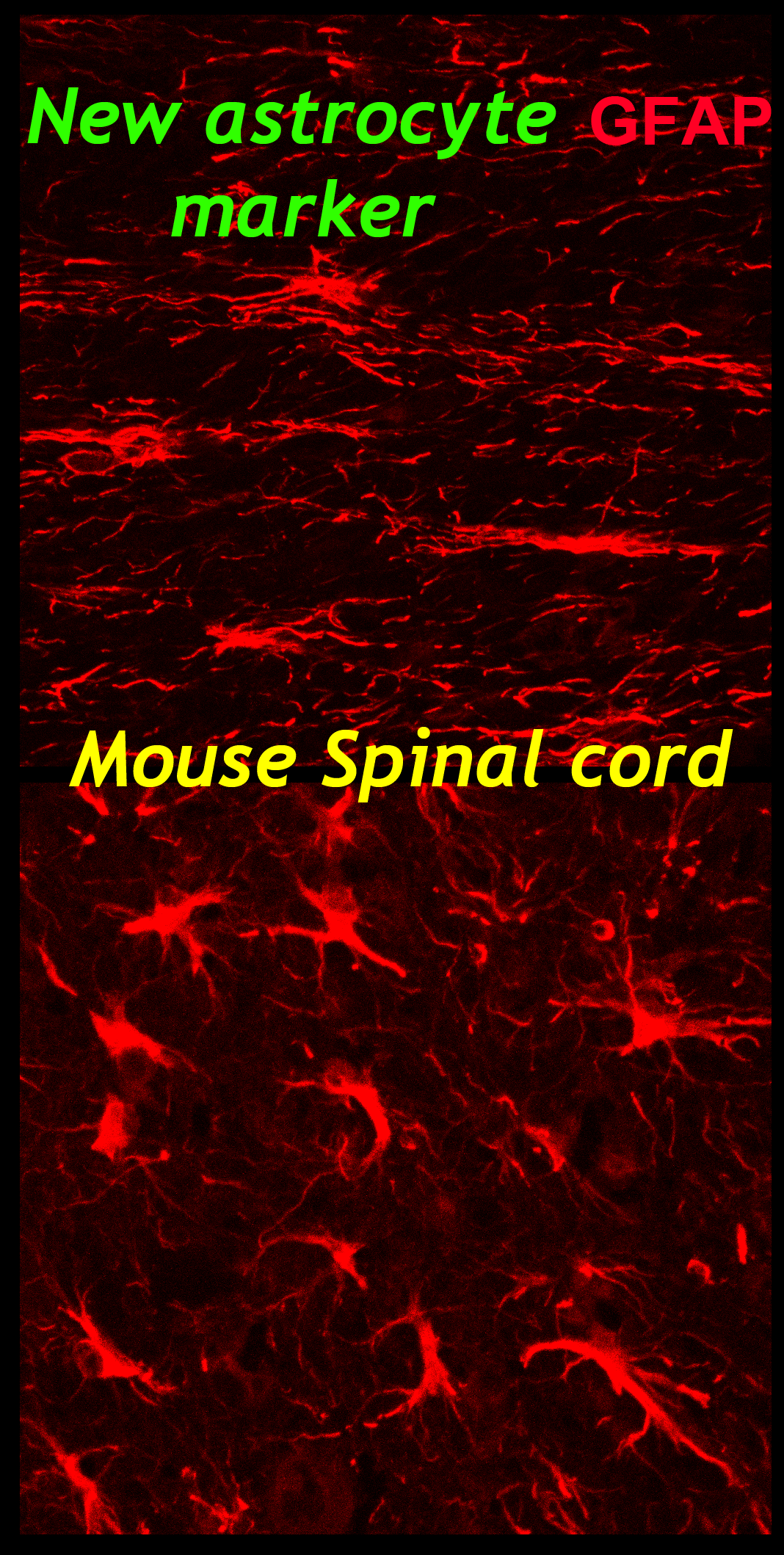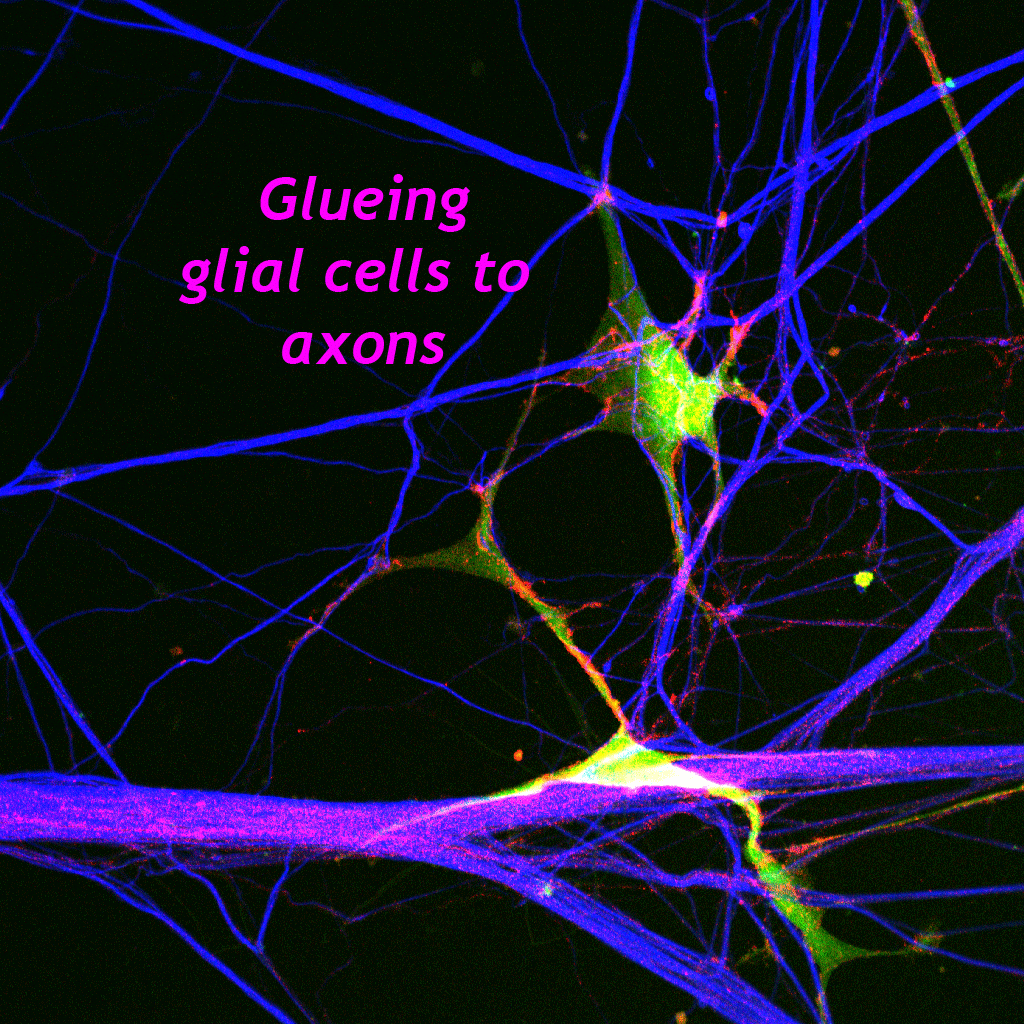


These papers address current needs in neurotrauma proteomics, the mouse astrocyte trauma-release proteome: traumatome, and astrocyte Injury-defined, AID biomarkers, their identification and biofluid profiles in severe and mild TBI patients.
New astroglial injury-defined biomarkers for neurotrauma assessment
Halford J, Shen S, Itamura K, Levine J, Chong AC, Czerwieniec G, Glenn TC, Hovda DA, Vespa P, Bullock R, Dietrich WD, Mondello S, Loo JA, Wanner IB.
Journal of cerebral blood flow and metabolism : official journal of the International Society of Cerebral Blood Flow and Metabolism. 2017; 37(10):3278-3299.
PubMed [journal] PMID: 28816095PMCID: PMC5624401
Levine J, Kwon E, Paez P, Yan W, Czerwieniec G, Loo JA, Sofroniew MV, Wanner IB.
Glia. 2016; 64(5):668-94. NIHMSID: NIHMS740968
PubMed [journal] PMID: 26683444 PMCID: PMC4805454
Addressing the needs of traumatic brain injury with clinical proteomics.
Shen S, Loo RR, Wanner IB, Loo JA.
Clinical proteomics. 2014; 11(1):11
PubMed [journal] PMID:24678615; PMCID:PMC3976360

These papers show the mechanistic steps of glial scar formation and signaling of the transcription factor STAT3 mediating reactive gliosis after traumatic spinal cord injury and in vitro modeling using ‘scars in a dish’.
Wanner IB, Anderson MA, Song B, Levine J, Fernandez A, Gray-Thompson Z, Ao Y, Sofroniew MV.
The Journal of neuroscience : the official journal of the Society for Neuroscience. 2013; 33(31):12870-86.PubMed [journal] PMID: 23904622 PMCID: PMC3728693
An in vitro trauma model to study rodent and human astrocyte reactivity.
Wanner IB.
Methods in molecular biology (Clifton, N.J.). 2012; 814:189-219.PubMed [journal] PMID: 22144309
A new in vitro model of the glial scar inhibits axon growth.
Wanner IB, Deik A, Torres M, Rosendahl A, Neary JT, Lemmon VP, Bixby JL.
Glia. 2008; 56(15):1691-709. NIHMSID: NIHMS318219PubMed [journal] PMID: 18618667 PMCID: PMC3161731
Protocols of Neural Cell Culture
deVellis J, Ghiani CA, Wanner I, Cole R.
4th ed. Doering LC, editor. Totowa, NJ: Humana Press Inc.; 2009. Chapter 9, Preparation of normal and reactive astrocyte cultures; p.193-216.

Glial cells are essential chaperones for neuronal outgrowth, network activity and survival. They are remarkable in their plasticity after injury as they re-express early developmental markers that support regeneration. These studies address molecular cues of neuron-glial interactions that benefit regeneration of severed neuronal processes after injury.
Olfactory ensheathing cell-neurite alignment enhances neurite outgrowth in scar-like cultures.
Khankan RR, Wanner IB, Phelps PE.
Experimental neurology. 2015; 269:93-101. NIHMSID: NIHMS679375PubMed [journal] PMID:25863021PMCID:PMC4446242
Espinosa-Jeffrey A, Paez PM, Cheli VT, Spreuer V, Wanner I, de Vellis J.
PloS one. 2013; 8(12):e76963.PubMed [journal]PMID:24324574PMCID:PMC3850904
A role for ephrin-A5 in axonal sprouting, recovery, and activity-dependent plasticity after stroke.
Overman JJ, Clarkson AN, Wanner IB, Overman WT, Eckstein I, Maguire JL, Dinov ID, Toga AW, Carmichael ST.
Proceedings of the National Academy of Sciences of the United States of America. 2012; 109(33):E2230-9.PubMed [journal]PMID:22837401PMCID:PMC3421211
Usher LC, Johnstone A, Ertürk A, Hu Y, Strikis D, Wanner IB, Moorman S, Lee JW, Min J, Ha HH, Duan Y, Hoffman S, Goldberg JL, Bradke F, Chang YT, Lemmon VP, Bixby JL.
The Journal of neuroscience : the official journal of the Society for Neuroscience. 2010; 30(13):4693-706. NIHMSID: NIHMS192783PubMed [journal]PMID:20357120PMCID:PMC2855497
Purinergic receptor signaling regulates N-cadherin expression in primary astrocyte cultures.
Tran MD, Wanner IB, Neary JT.
Journal of neurochemistry. 2008; 105(1):272-86.PubMed [journal]PMID:18182057
Inhibition of N-cadherin and beta-catenin function reduces axon-induced Schwann cell proliferation.
Gess B, Halfter H, Kleffner I, Monje P, Athauda G, Wood PM, Young P, Wanner IB.
Journal of neuroscience research. 2008; 86(4):797-812.PubMed [journal]PMID:17941050
Wanner IB, Mahoney J, Jessen KR, Wood PM, Bates M, Bunge MB.
Glia. 2006; 54(5):424-38.PubMed [journal]PMID:16886207
Role of N-cadherin in Schwann cell precursors of growing nerves.
Wanner IB, Guerra NK, Mahoney J, Kumar A, Wood PM, Mirsky R, Jessen KR.
Glia. 2006; 54(5):439-59.PubMed [journal]PMID:16886205
Neary JT, Kang Y, Shi YF, Tran MD, Wanner IB.
Novartis Foundation symposium. 2006; 276:131-43; discussion 143-7, 233-7, 275-81.PubMed [journal]PMID:16805427
N-cadherin mediates axon-aligned process growth and cell-cell interaction in ratSchwann cells.
Wanner IB, Wood PM.
The Journal of neuroscience : the official journal of the Society for Neuroscience. 2002; 22(10):4066-79.PubMed [journal]PMID:12019326

In these papers we established highly sensitive non-radioactive in situ hybridization approaches for subcellular mRNA distribution and local translation studies. The work supports the Hebbian synapse concept of activity-dependent changes by showing electrical activity induced local translation in cerebellar Purkinje neurons.
Wanner I, Baader SL, Oberdick J, Schilling K.
Molecular and cellular neurosciences. 2000; 15(3):275-87.PubMed [journal]PMID:10736204
Yang H, Wanner IB, Roper SD, Chaudhari N.
The journal of histochemistry and cytochemistry : official journal of the Histochemistry Society. 1999; 47(4):431-46.PubMed [journal]PMID:10082745
Mapping of D1 dopamine receptor mRNA by non-radioactive in situ hybridization.
Lazarov NE, Schmidt U, Wanner I, Pilgrim C.
Histochemistry and cell biology. 1998; 109(3):271-9.PubMed [journal]PMID:9541476
Wanner I, Baader SL, Brich M, Oberdick J, Schilling K.
Histochemistry and cell biology. 1997; 108(4-5):345-57.PubMed [journal]PMID:9387927
Nasal odorant receptor expression reveals receptor-specific patterns that transduce an unique odorant by a specific across fiber excitation pattern to the olfactory bulb encoding its smell. We also show how these expression patterns form during nasal development. Using 3-dimensional reconstructions, ontogenetic studies and non-radioactive in situ hybridization techniques.
Molecular genetics of mammalian olfaction.
Breer H, Wanner I, Strotmann J.
Behavior genetics. 1996; 26(3):209-19.
PubMed [journal] PMID: 8754248
Receptor expression in olfactory neurons during rat development: in situ hybridization studies.
Strotmann J, Wanner I, Helfrich T, Breer H.
The European journal of neuroscience. 1995; 7(3):492-500.
PubMed [journal] PMID: 7773446
Rostro-caudal patterning of receptor-expressing olfactory neurones in the rat nasal cavity.
Strotmann J, Wanner I, Helfrich T, Beck A, Breer H.
Cell and tissue research. 1994; 278(1):11-20.
PubMed [journal] PMID: 7954694
Strotmann J, Wanner I, Helfrich T, Beck A, Meinken C, Kubick S, Breer H.
Cell and tissue research. 1994; 276(3):429-38.
PubMed [journal] PMID: 8062338
Probing olfactory receptors with sequence-specific antibodies.
Krieger J, Schleicher S, Strotmann J, Wanner I, Boekhoff I, Raming K, De Geus P, Breer H.
European journal of biochemistry. 1994; 219(3):829-35.
PubMed [journal] PMID: 8112334
Expression of odorant receptors in spatially restricted subsets of chemosensory neurones.
Strotmann J, Wanner I, Krieger J, Raming K, Breer H.
Neuroreport. 1992; 3(12):1053-6.
PubMed [journal] PMID: 1493216